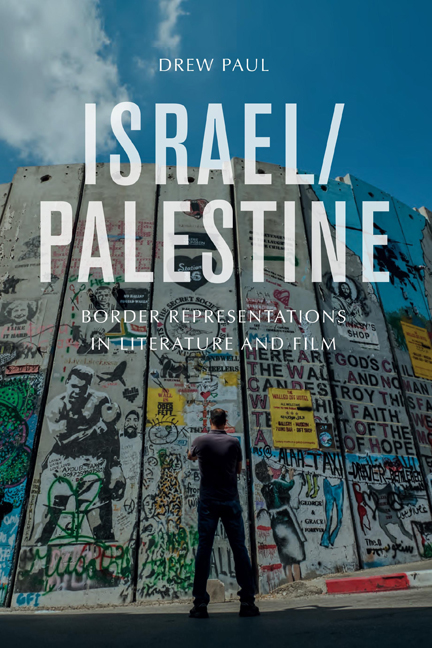6 - The Illusion of the One-way Mirror: Filming the Checkpoint in Divine Intervention
Published online by Cambridge University Press: 08 October 2020
Summary
In a scene from Palestinian director Elia Suleiman's film Divine Intervention (Yadd Ilahiyya, 2002), the main character drives through al-Ram checkpoint between Jerusalem and Ramallah. The character, named E. S. and played by the director himself, passes from the Jerusalem side to the Ramallah side, and then he turns and parks his car in a lot adjacent to the checkpoint, where he waits for his girlfriend to arrive from the direction of Ramallah. The scene provides a general overview of the characteristics of the checkpoint space, which is a crucial setting in the film (figure 6.1). We can see the watchtower, the concrete and plastic barriers that direct traffic, a group of Palestinians walking through the checkpoint, armed soldiers manning the checkpoint and military vehicles nearby. It demonstrates that E. S. is able to pass through the checkpoint, while his girlfriend cannot, but he stops there, as his destination is the border itself. He parks at a vantage point that allows him to focus his vision on the checkpoint and act as an observer and a documenter of this space.
The scene uses filming techniques such as framing to remind the viewers of the constructedness both of the space of the checkpoint and of its filmic representation. The camera captures the arrival of E. S. from within the car he drives, facing out and forward so that the camera reflects the perspective of E. S. or a passenger. The viewer makes the journey through the checkpoint along with E. S. The dashboard, sides and tops of the front windshield are visible at the edges of the frame, which, along with the moving car, reminds us that we as viewers possess a limited line of sight, that what we see was carefully framed and shot. It also draws attention to the fact that the viewer sees the events through a screen (on film), as we watch from the other side of the windshield. This perspective presents the viewer with the temporary, haphazard nature of the checkpoint. The concrete barriers and plastic cones appear hastily erected, as if they could be removed at a moment's notice.
- Type
- Chapter
- Information
- Israel/PalestineBorder Representations in Literature and Film, pp. 158 - 185Publisher: Edinburgh University PressPrint publication year: 2020

